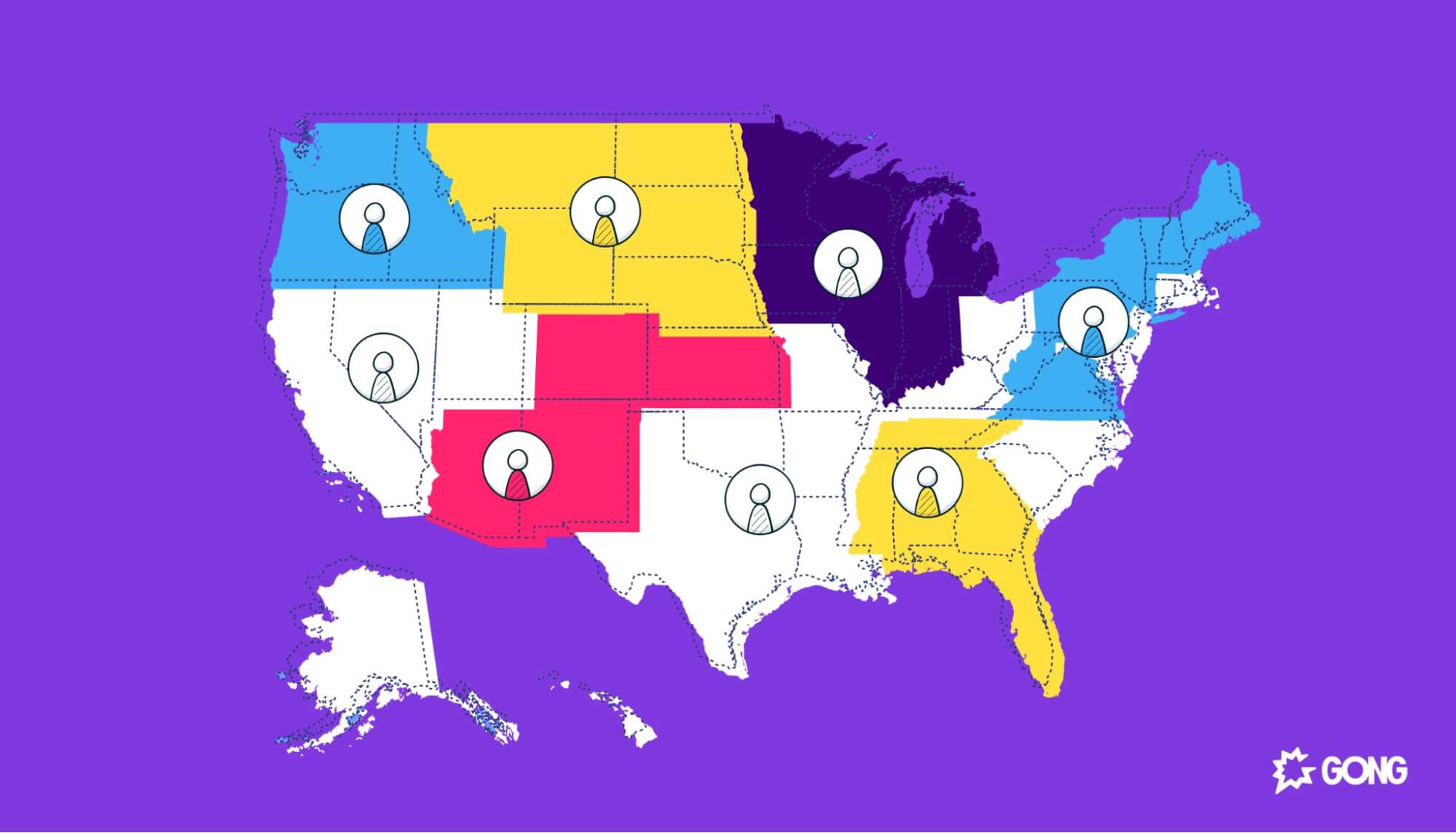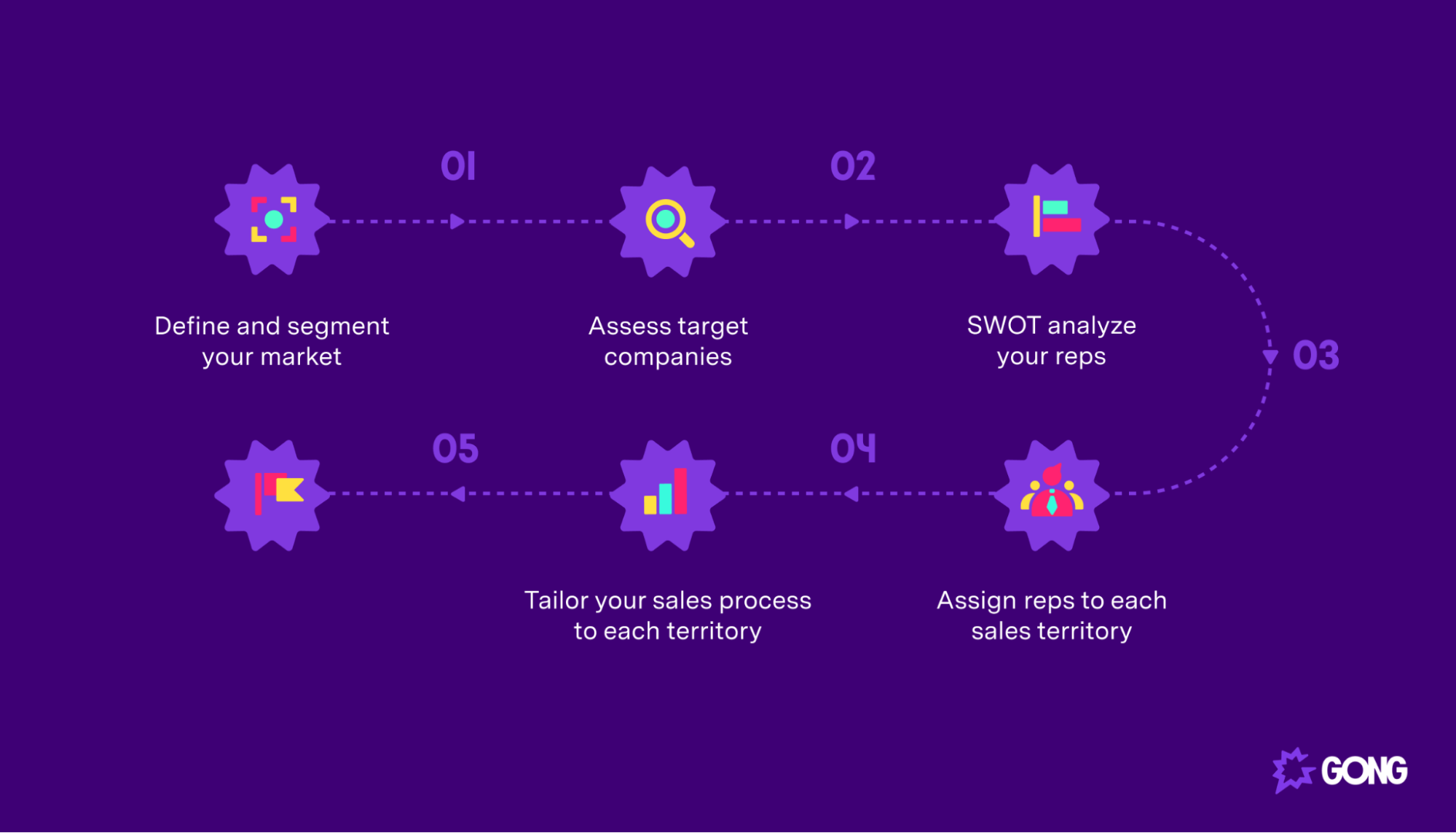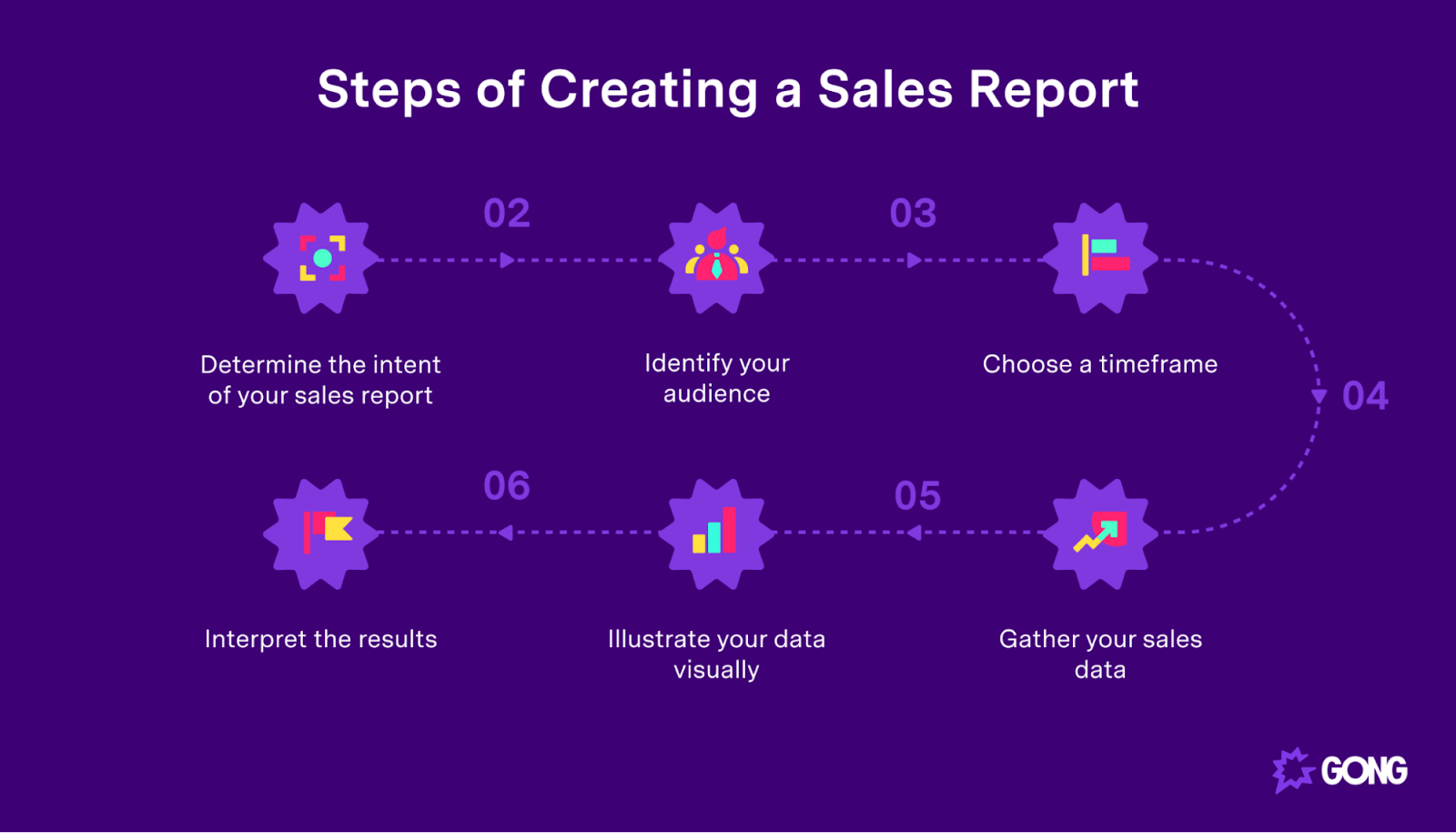Everything You Need to Know About Sales Territories
Sales territories get a bad rep.
Reps moan that they’re unfair, especially if they get lumped with the Dakotas and Wyoming while their deskmate gets San Francisco.
But that’s not a problem with sales territories as a whole so much as it’s a problem with how those territories were created and assigned. When you create balanced sales territories that everyone is happy with, the benefits can be huge.
Splitting your total addressable market into different sales territories — by geography, industry, or company size — gives your reps greater focus and allows them to specialize in ways that can increase sales and reduce costs.
When it comes to sales territories, it’s all about execution. So whether you want to build out your territories from scratch or improve your existing ones, this is the guide for you.
What is a sales territory?
A sales territory is a well-defined segment of your target market assigned to a particular salesperson or team. They’re a relatively easy way for sales leaders to divide a large target market between individual sales reps, giving those sales representatives focus and allowing them to specialize and meet the sales objectives more efficiently.

Sales territories were traditionally created by geographic location. For instance, one sales rep may be responsible for New York, another for San Francisco, and another for LA. But today, you can define sales territories by industry type, company size, and behavior.
That means you can use sales territories even if you have a remote workforce and no traveling salespeople.
What is a sales territory plan?
A sales territory plan, also called a sales territory mapping strategy, is the process you use to define sales territories and train your reps to close sales. If your sales territories are the areas on a map you will attack, your sales territory plan is your battle strategy.
Without a well-defined sales plan, your sales team may waste time, effort, and sales potential by having too many or too few people serving the same territory. There may be arguments if sales territories aren’t defined or allocated fairly.
A good sales territory plan will split your company’s total addressable market into balanced territories and give your reps the leads on potential buyers and the tools they need to sell effectively.
What are the benefits of using sales territories?
There are four major benefits to using sales territories as part of your sales management strategy.
Improves the efficiency of your sales team
Segmenting your target market lets you take advantage of your sales person’s strengths and weaknesses and allows reps to specialize in a market or vertical.
For instance, some of your reps may know more about one industry than others or have more experience selling in a particular geographic area. By creating sales territories based on these characteristics and allowing reps to specialize, they’ll become much more efficient at meeting buyers’ needs. That will not only result in better customer success, but also lead to a shortened sales cycle.
Improves productivity and increases sales
Sales territories give reps focus so they can spend more time selling and less time on low-value tasks. Naturally, that makes them far more productive.
For example, well-balanced geographical sales territories cut down your reps’ travel time. Creating sales territories by industries means reps will likely face the same pain points and objections — and as a result, become much better at overcoming them.
They also give your reps more focus, so they don’t have to spend as long finding leads or researching prospects.
Improves reporting
When you divide your total addressable market into smaller, more manageable segments, it becomes easier for you as a sales manager to set sales goals, monitor your reps’ progress, and create detailed sales reports.
Rather than set broad sales goals for each rep, you can use the data about sales territories to set more specific, accurate, and achievable targets. For instance, you could use previous historical data for each territory to accurately forecast potential future sales.
At the same time, fairly defined sales territories should make it easier to compare the performance of one rep over another. If both territories are the same size in potential value, it becomes obvious when one rep isn’t pulling their weight.
Improves sales extraction across segments
Finally, sales managers can use territories to understand the strengths and weaknesses of each market segment and tailor their strategy accordingly. For instance, you may find that you have underestimated the size or value of a territory and need to assign additional reps accordingly. This will help you maximize sales extraction.
In some cases, segmenting your target audience may uncover previously untapped markets, which can be folded into existing territories or used to create entirely new territories.
How to divide sales territories
Anyone can divvy up a target market and hand out territories to sales reps. The trick to sales territory planning is to segment your total market as efficiently and fairly as possible.

Follow these steps to create a sales territory plan.
1. Define and segment your market
The success of your sales territory strategy hinges on how you segment your target market. As previously mentioned, you can create territories based on characteristics such as location, industry type, and company size.
When it comes to assessing the sales potential of each territory, a good starting point is to look at historical deals and those currently in your pipeline. Identify the biggest deals and the best current buyers and look for any characteristics or traits they share.
You can also turn to your Ideal Customer Profiles (ICP) and buyer personas for help. The characteristics you highlight there can often be used to segment your target market into sales territories. Any traits in the image below, besides job title and age group, would be excellent ways to create sales territories.
 It won’t make sense to segment your market by some traits. For instance, if every company you sell to is based in New York, there’s no point in segmenting by location. The same goes for revenue if all of your buyers comprise enterprise clients.
It won’t make sense to segment your market by some traits. For instance, if every company you sell to is based in New York, there’s no point in segmenting by location. The same goes for revenue if all of your buyers comprise enterprise clients.
Once you have a couple of traits you think work, brainstorm similar potential markets. You could think of other industries that would use your product, for instance. Or other geographical markets if your clients are spread across the globe.
2. Assess target companies
Check the viability and sales potential of each territory before going any further. So the next step is to analyze companies within the territories you identified in step one. You want to see if multiple companies match your ICPs and have a demand for your product or service.
In some cases, you’ll be able to do this remotely using a data source like Crunchbase. But if you want to be certain about the size of a potential market, it makes sense to have your reps call into companies.
You can use the BANT framework to see if these companies are a good fit. You don’t have to worry so much whether the person you’re speaking to has the authority to make a purchase decision, but you’ll definitely want to find out whether they have the budget and a need for your solution.

Assessing potential target companies doesn’t just validate your territories. It will also help you calculate the size of each market (so you can assign them fairly) and prioritize which markets to target first.
3. SWOT analyze your reps
Each of your reps has unique strengths and weaknesses that may align with the sales territories you’ve identified. For example, you might have sales reps with experience in different geographic areas or industries. Or maybe one rep is better at handling enterprise clients.
If you don’t have a firm grasp of your team’s strengths and weaknesses, then use a SWOT analysis to see what they are.

SWOT stands for strengths, weaknesses, opportunities, and threats. Here’s how you can deploy a SWOT analysis to analyze your reps and the sales potential of target markets:
- Strengths: Where do reps excel? Do they know potential territories?
- Weaknesses: Do sales reps have problems with certain clients, industries, or parts of the sales process?
- Opportunities: Are there untapped markets your team could serve?
- Threats: What threats are you facing in each territory?
This isn’t about ranking reps from best to worse. It’s about finding the best markets for each rep so they can have an immediate impact. You never know — the right sales territory might turn an underperforming rep into a top seller.
4. Assign reps to each sales territory
Now that you’ve identified your reps’ strengths and weaknesses, it should be relatively easy to assign reps to each of your sales territories.
Start with obvious matches like reps with deep knowledge of a certain industry or experience selling in a geographic area. Then assign the other territories as best you can.
If you’re stuck, why not ask reps which territories they’d like? It’s better that reps are happy with their territories rather than resentful.
However you assign territories, it’s crucial you do so fairly. Having assessed target companies in each territory, you should have a fair understanding of the total potential value of each segment. Try to ensure every rep has territories of the same size and value. In some cases, it will mean one rep only has one territory, and another has three.
5. Tailor your sales process to each territory
Just because you’ve defined sales territories using a single criterion doesn’t mean each market has the same requirements. For instance, if you’ve segmented your audience by market size, enterprise clients will have a much longer sales cycle than smaller buyers.
It may make sense to create a new sales process or methodology for each market. For each territory, ask yourself:
- What is the revenue goal?
- What outreach cadence is required for this territory?
- Do sales reps need specific resources?
- How have we successfully sold to these kinds of buyers before?
Then adjust your sales strategy accordingly.
For instance, you want to use the MEDDIC process in territories where complex enterprise deals are common. In others, a more consultative approach like Sandler Selling may be better.
How to manage your sales territories
There’s no point in creating a sales territory plan if you aren’t going to devote time and resources to sales territory management on an ongoing basis.
Part of that will be ensuring each territory remains valuable and that each of your reps has a fair share of the total addressable market.
To do so, you’ll need to create a sales report for each sales territory using the steps outlined in the image below.

As you can see from the image, a key part of creating a sales report is interpreting the results. That goes double for sales territory reports.
Regular sales reports will help you track whether sales are increasing or decreasing in each territory and the effectiveness of each of your reps. If you notice a territory is shrinking in opportunity size, you may need to realign territories.
Master your sales territories with Gong
Sales territory planning doesn’t need to have a bad rep.
Create well-defined sales territories and assign them fairly, and you can turn your team’s scattergun approach to sales into a well-oiled, efficient machine.
But you need data to continue optimizing your sales territory plan, which is where we come in. Gong gives you full visibility into every deal in your pipeline, helping you better understand the state of each sales territory so you can increase revenue per rep.
Book a demo today to learn more about how our revenue intelligence platform can help with territory planning.
